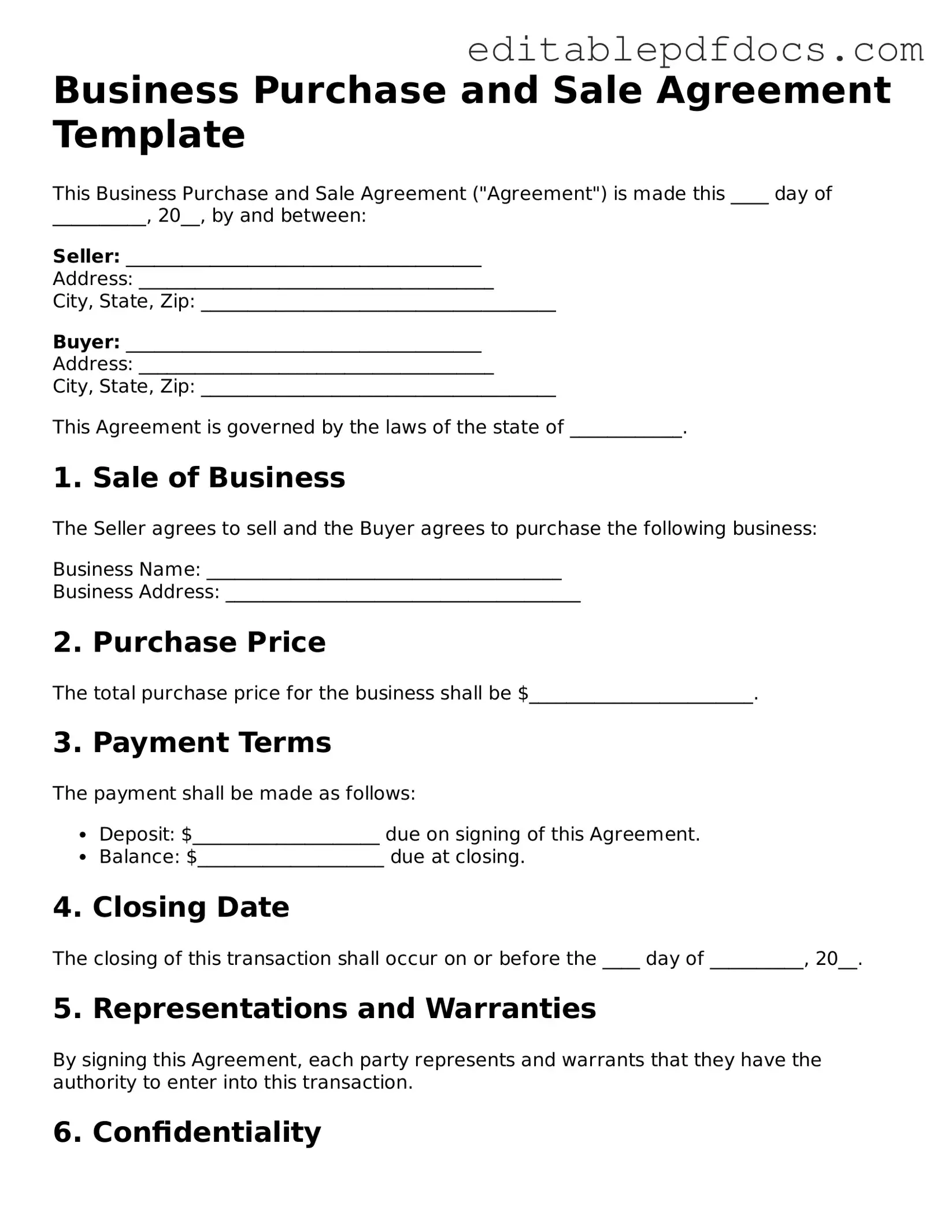When individuals engage in the process of buying or selling a business, the Business Purchase and Sale Agreement (BPSA) becomes a critical document. However, many make common mistakes that can lead to complications down the line. Understanding these pitfalls can help ensure a smoother transaction.
One frequent error is failing to accurately describe the business assets. Buyers and sellers often overlook the importance of clearly listing all assets involved in the sale. This includes not just physical assets like equipment and inventory, but also intangible assets such as intellectual property and customer lists. A vague description can lead to disputes later on.
Another mistake involves neglecting to include contingencies. Contingencies are conditions that must be met for the sale to proceed. Without them, buyers may find themselves locked into a deal that they cannot fulfill due to unforeseen circumstances, such as financing issues or regulatory approvals.
Many people also underestimate the importance of due diligence. Buyers should thoroughly investigate the business before finalizing the agreement. This includes reviewing financial statements, legal compliance, and any existing liabilities. Skipping this step can result in unpleasant surprises after the sale.
In addition, using generic templates without customization is a common mistake. While templates can be helpful, they often fail to address the specific needs and nuances of a particular transaction. Tailoring the agreement to reflect the unique aspects of the business can prevent misunderstandings.
Another oversight is inadequate attention to the terms of payment. The agreement should clearly outline how and when payments will be made. Ambiguities in payment terms can lead to disputes and affect the overall trust between the parties involved.
People often forget to address liabilities in the agreement. It is essential to clarify who will be responsible for existing debts or legal issues after the sale. Failing to do so can leave one party unexpectedly liable for obligations they thought were settled.
Additionally, not including a non-compete clause can be detrimental. A non-compete clause helps protect the buyer from the seller starting a competing business immediately after the sale. Without this provision, the buyer may find themselves in direct competition with the seller, which can undermine the value of the purchase.
Many also overlook the importance of signatures. The agreement must be signed by all parties involved to be legally binding. Failing to obtain the necessary signatures can render the agreement unenforceable, leaving both parties vulnerable.
Finally, not seeking legal advice can be one of the most significant mistakes. The complexities of a Business Purchase and Sale Agreement often require professional guidance. An attorney can help identify potential pitfalls and ensure that the agreement complies with relevant laws and regulations.
By being aware of these common mistakes, individuals can approach the Business Purchase and Sale Agreement with greater confidence and clarity. A well-prepared agreement can facilitate a smoother transaction and set the stage for a successful business relationship.
